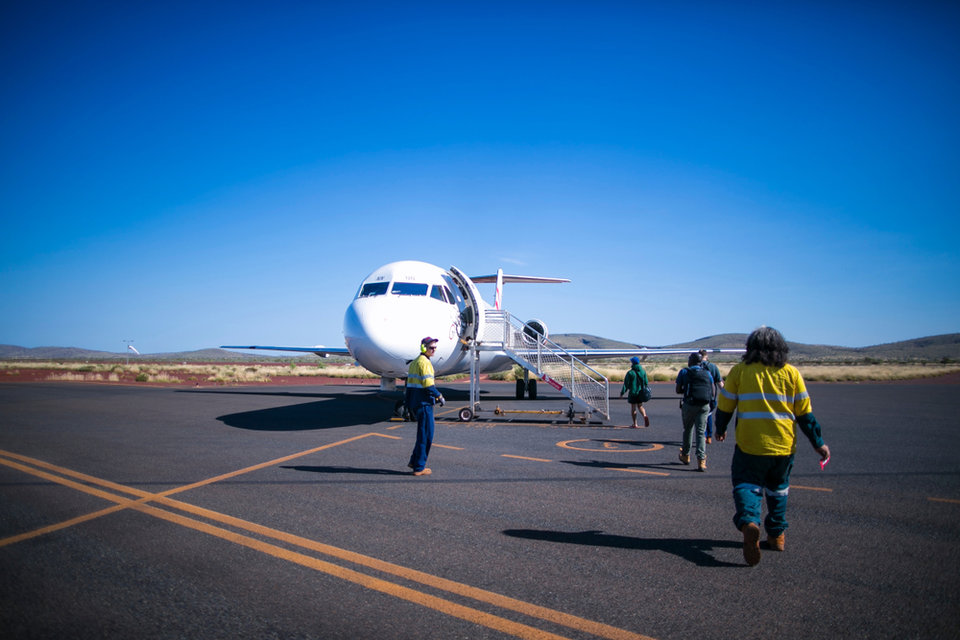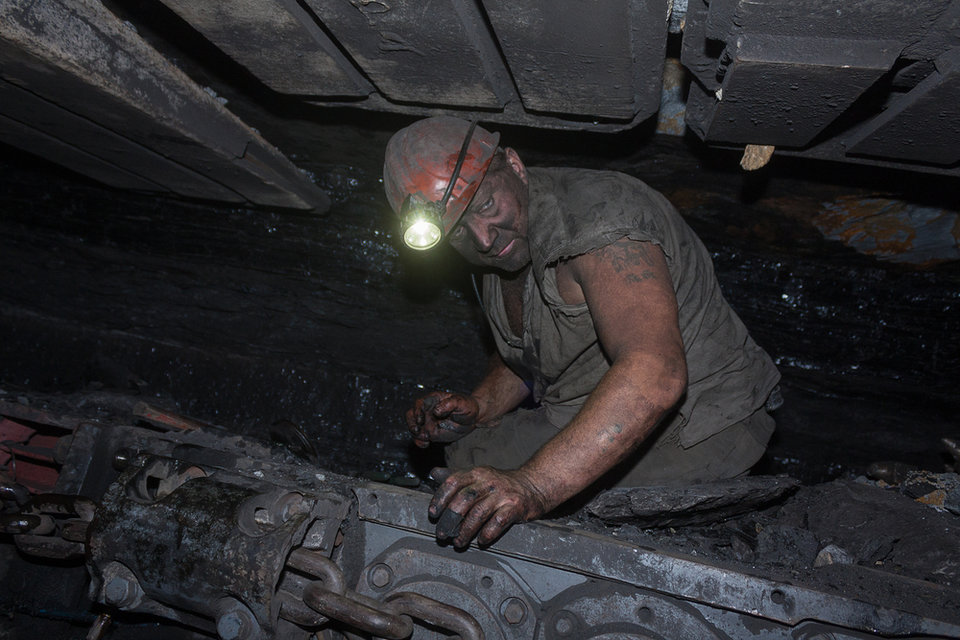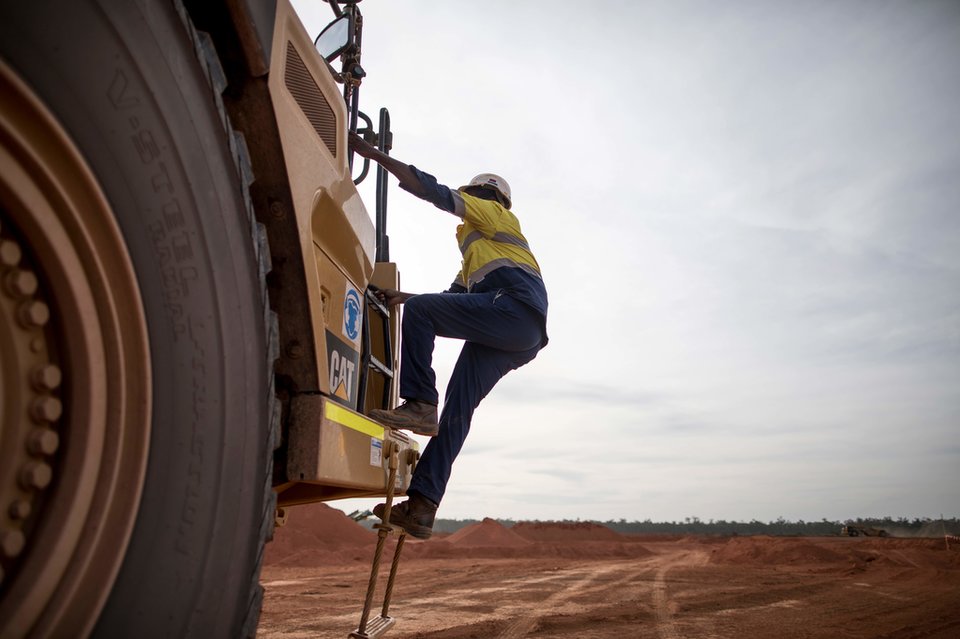Do Australians still want to be miners?
Mines across Australia are recovering fast after a long downturn, but many firms are struggling to fill positions, despite offering attractive salaries. How can Australian mining firms recruit enough staff to take advantage of a new commodities boom? Chris Lo reports.
Scroll down to read the article
After several years of depressed commodity prices, consolidation and reduced spending, the mining industry is bouncing back. According to PwC’s Mine 2018 report, subtitled ‘Tempting times’, the world’s top 40 mining companies increased their revenue by 23% in 2017, reaching a combined total of around $600bn.
The PwC report acknowledges the benefits the industry is seeing as a result of the mining commodities upswing, along with the prospect of a new projects boom, as miners look to capitalise on growing demand.
Australia is a prime example, with new projects attracting major investment and 2018 looking like a banner year for mergers and acquisitions. In June, Anglo-Australian mining giant BHP announced the construction of the new, A$4.7bn South Flank iron ore mine in Western Australia’s Pilbara region, which joins two other major Pilbara iron ore projects planned by Fortescue Metals Group and Rio Tinto.
“Everywhere we look people are saying, mining companies look profitable again and how can we get our hands on it to get our fair share,” said PwC Australia mining leader Chris Dodd in June.
With this surge in mining activity comes a corresponding rise in jobs; well-paid career opportunities are abundant across the Australian mining sector, but multiple reports note that the industry is struggling to fill available positions. The mining lifestyle was once considered an attractive choice for thousands of young Australians looking to secure long-term careers in the resource sector, so why are potential candidates now turning their backs on the industry, and how can mining companies build the workforces they will need in the coming years?
Mining jobs abound across Australia
At this booming stage of the mining cycle, with Australia’s main mineral resources – coal and iron ore – both rallying to some extent from 2016 lows, there is certainly no shortage of job opportunities. In Western Australia alone, analysis by The Weekend West notes that the 15 new projects that are expected to go ahead in the next few years could generate around 10,000 new jobs in construction and operations.
Data from major Australian recruitment group SEEK, published in June, found that job listings in the mining, resources and energy sector rose by 34% in May 2018, when compared to May 2017. This was by some margin the largest increase in job ads of any sector in Australia.
“The outlook is positive in terms of job prospects in the Australian mining industry,” says Australian Resources and Energy Group (AMMA) head of policy and public affairs Tom Reid. “Year-on-year job vacancies are up more than 30% and this rise is showing no signs of subsiding. Queensland and Western Australia remain the hotspots for employment opportunities, with year-on-year growth in vacancies between 30% and 40%.
“In most recent months, the biggest occupational growth has been in operational management, with the sub sectors of metal ore mining, and coal and mineral mining, showing large growth. We are also seeing great demand for labour in more regional areas, in particular skills shortages in the Kalgoorlie Goldfields [in Western Australia].”
Queensland and Western Australia remain the hotspots for employment opportunities.

Fly-in/fly-out work schedules dominate Australian mining operations.
Credit: King Ropes Access/Shutterstock.
The stresses of FIFO working may explain why the industry is having a hard time luring back workers.
Have Aussies fallen out of love with the mining lifestyle?
So why aren’t these positions being filled faster? Inadequate pay isn’t likely to be the answer, with many firms reportedly offering annual salaries of A$150,000 or more to attract workers to remote mine sites.
The ‘mining lifestyle’ is a better place to start looking for Australians’ growing disconnect with the industry. The intense strain and social isolation of the fly-in/fly-out (FIFO) work schedules dominate many Australian mining operations and involve flying workers in for a few weeks of 12-hour shifts, before flying home for a period of rest and family time.
FIFO has been a source of controversy in Australia for several years, with persistent reports that this method of working can have deleterious effects on workers’ mental health and wellbeing, from the stress and loneliness of long stretches at remote mine sites to the relationship and family issues that come with spending weeks at a time away from the family home.
“The average family man doesn’t want to be away for three to four weeks, away from their kids and missing important events,” a former FIFO worker told news.com.au in July. “It’s hard.”
The stresses of FIFO working may explain why the industry is having a hard time luring back workers who left the industry during the downturn. “The challenge now is to attract these people back into the industry after they have experienced the disruption of having to move on during the downturn,” says Reid. “Anecdotally we are hearing of some reluctance among pockets of skilled people to return to the industry.”
Tania Constable.
Credit: Minerals Council of Australia.

The stresses of FIFO working may explain why the industry is having a hard time luring back workers
Building awareness of the industry
Young Australians who are currently in school or higher education will be needed to staff new and expanded mining operations in years to come. Research by the Minerals Council of Australia (MCA) and Mining Education Australia suggests that the industry needs at least 200 skilled graduates each year just to match natural workforce attrition, let alone drive new projects. Despite the heightened demand, the data suggests that young people are increasingly ignorant of one of Australia’s biggest industries and the opportunities it presents.
“The mining engineering pipeline has been rapidly declining, with projected enrolments dropping from 171 in 2017 to 98 in 2018, 69 in 2019 and 47 in 2020,” warns MCA chief executive Tania Constable. “This is in the face of marked increases in demand for mining, energy and resources employees.
“Research by youth research agency YouthInsight, with a nationally representative 1,061 senior high school students and first-year university students aged between 15 and 20, found that knowledge of mining careers was extremely low, with 59% of young people knowing nothing at all about mining careers. It is clear that the Australian mining industry and the mining equipment, technology and services sector need to tell their story better and do much more to raise awareness of their industries amongst young Australians and build the workforce of the future.”
The industry and its trade bodies are acutely aware of the looming skills shortage and the impact it could have on this mature sector’s development, and there are a plethora of initiatives underway to increase the presence of mining and resources as a career option for students. Constable says the MCA has invested more than A$50m in minerals higher education since 2000, and companies and industry groups have set up skills academies, school visits and other schemes to promote the sector to young Australians, although with the increasing politicisation of the industry, these initiatives will have to defend themselves against accusations of skewing the country’s youth towards a pro-mining bias.
Having convened a summit on minerals education in Melbourne in March, the MCA is looking to build on discussions to develop a multi-stakeholder framework to guide educational resources in the future.
“Following the summit, the MCA is partnering with industry, other peak bodies, academia and students to develop a strategy that will provide a framework for industry to respond to current and future skills, technology and educational challenges and secure the future minerals workforce,” says Constable.
The industry needs at least 200 skilled graduates each year just to match natural workforce attrition.

An operator stands next to plant machinery on a bauxite plateau in Queensland, Australia.
Credit: Rio Tinto
As automation continues to make its mark on mining, there is a growing demand for workers with IT backgrounds
As automation continues to make its mark on mining, there is a growing demand for workers with IT backgrounds.
Home and away: recruiting a workforce for the future
Changes at the cutting-edge of mining technology could help the industry attract and retain younger candidates with digital skills. As automation continues to make its mark on mining, especially in advanced markets such as Australia, there is a growing demand for workers with IT backgrounds. The increasing prevalence of remote operations centres could offer more opportunities for those unwilling to relocate or embrace the FIFO lifestyle.
“It is not only skilled tradespeople, engineers and geologists the industry needs,” says Reid. “It also requires qualified data scientists and programming experts with more high-tech qualifications as well as a range of other people.”
The digitisation trend could open up the industry to interest from candidates from a wider range of backgrounds, adds Constable.
“While there will always be a need for a human presence on site, future working arrangements will be more flexible than the past, providing further incentive for prospective applicants to consider a career in the mining industry,” she says. “These arrangements also create opportunities for more potential candidates from a wider group drawing on a more diverse workforce in terms of gender, culture, ability, training and skills.”
The industry is also keen to employ larger numbers of skilled workers from outside Australia if local candidates aren’t enough to plug the skills gap. In Western Australia, policymakers are considering a Designated Area Migration Agreement, which would give skilled migrant workers exemptions to Australia’s strict skilled migrants’ requirements and allow more workers to be flown in to staff projects.
“The resources and energy industry operates in a highly globalised skills market, and just as Australian expertise is required overseas to develop resources and energy projects in other parts of the world, so too is international expertise often required in Australia,” says Reid.
“We are heading in that direction of acute skills shortages again. It’s always important to have access to international skills to supplement and bolster our local workforce. This is the long-term reality of an international industry that requires long-term policy certainty to shore up large numbers of skilled and experienced people.”